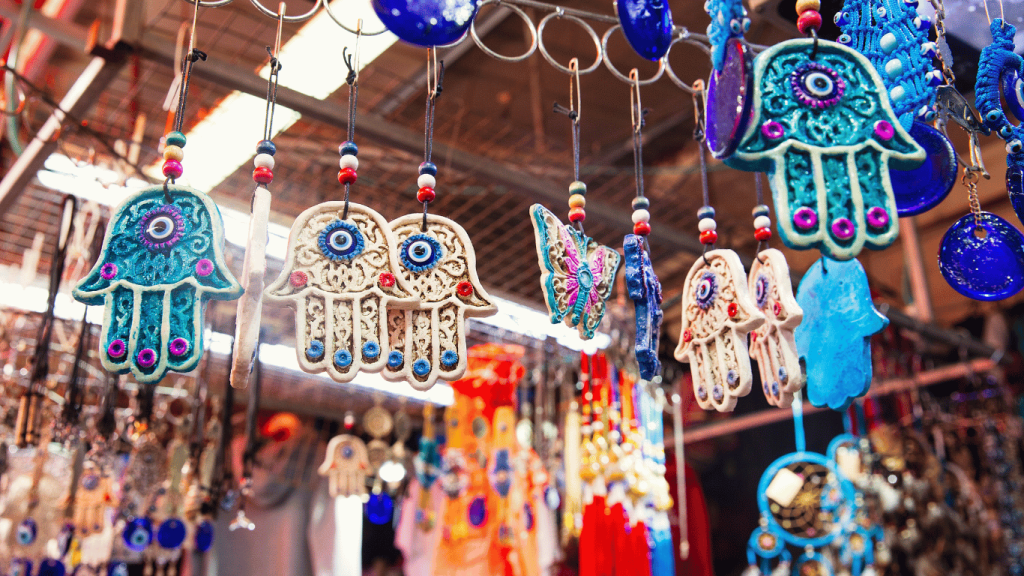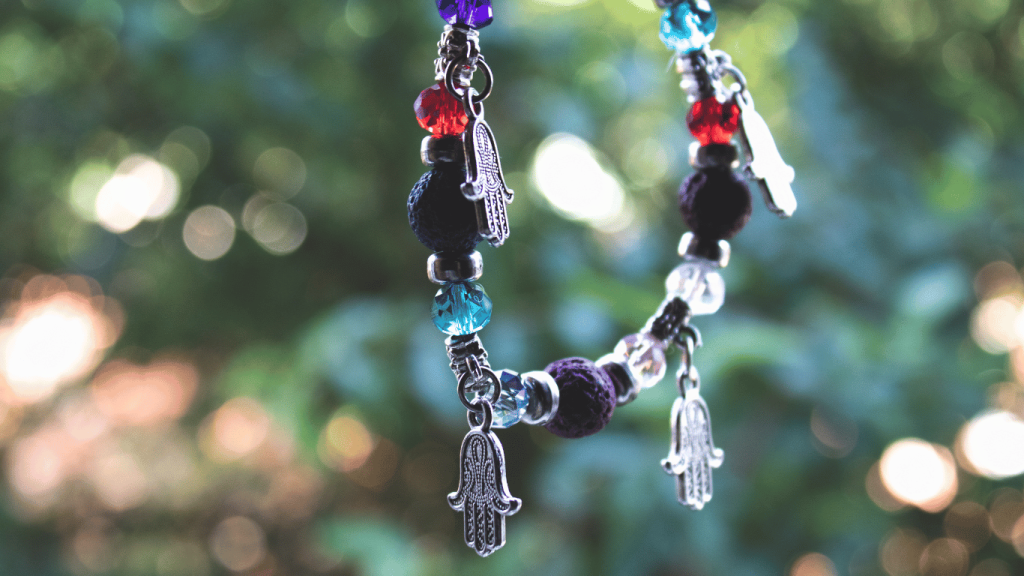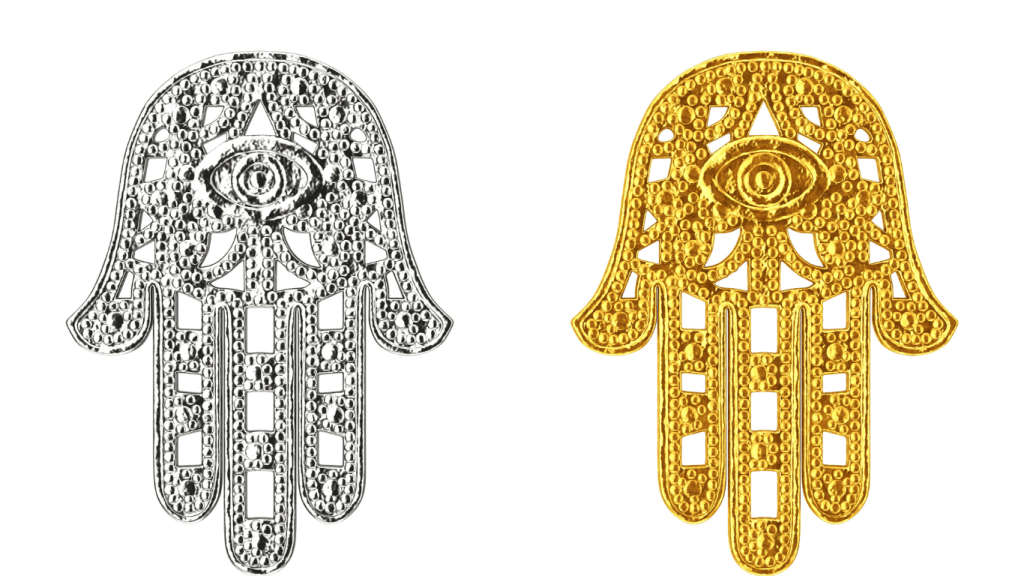Table of Contents
Accepted to have begun in Carthage, the hand of Fatima is a conjuring image customarily found in Abrahamic religions. People believe in actively fighting off evil and misfortune.
It might have begun as an ornament a long time back and is a Center Eastern image for insurance.
The Hand of Fatima story, also called Hamsa, is a North African and Center Eastern image with old and multicultural beginnings. Morocco, being an African nation, has a profound connection with Hamsa as one of its famous social talismans.
Presently, how about we plunge into the bewildering history of this astounding and fascinating special necklace?
A Dive into the History of Hamsa

Historical records suggest that the Hand of Fatima Story originated in Carthage, an ancient city in present-day Tunisia. Over time, it became absorbed into Jewish iconography, known as the Hand of Mariam. It went on to become a widespread symbol among Mediterranean Muslims, too.
The tradition named the hand after a protective female figure, leading to its naming after the daughter of the holy Prophet Muhammad (PBUH), Hazrat Fatima (R.A).
The Principal Legend Behind the Significance of the Hand of Fatima Story

Hazrat Ali (R.A), the fourth caliph of Islam, was married to the daughter of the Holy Prophet.
One day, Hazrat Ali brought a concubine to his house. Hazrat Fatima was cooking a meal at that time. In so much pain from seeing her husband with another woman, she stirred the hot meal with her hand instead of the spoon. Being in so much emotional and mental pain, she was unable to feel that physical pain of hers. Feeling her pain, Hazrat Ali (R.A) was overwhelmed with guilt. He reflected on his actions and chose to leave the other woman to devote himself solely to his beloved wife.
That hand of Hazrat Fatima (R.A) was, from then on, a symbol of protection and renunciation.
The Moroccan Version of the Legend
In Morocco, there is another widespread version explaining the meaning of Hamsa. Although they have the same characters and protagonists in this case, the accounts suggest that she may have placed her hand on the body of Hazrat Ali (R.A) and whispered a prayer before sending him to the battlefield.
With this moral support, Hazrat Ali returned from the war victorious and without suffering any physical harm.
This gesture would have served him as an effective protection. Therefore, according to this version, Hamsa is all about values such as strength, courage, and blessing.
Symbolism and Origin
The Hamsa is a symbol formed by a hand with five fingers with the middle fingerers right in the center. Attached to the middle finger are the index finger and the ring finger, each of the same size. On the sides, there are two thumbs, slightly tilted outwards.
Although today, this symbol is closely associated with the Muslim religion, archaeologists have proved that it was used before Islam.
So, this image doesn’t straightforwardly come from Islam. Albeit the Quran has disallowed such notions and imageries, Muslims frequently utilize this image to address the group of the Sacred Prophet (PBUH), called Ahl-e-Bayt. The hand is said to address the five prevailing characters in the family. Then again, Christians see it as the hand of Maryam, though Jews utilize this image to address the Pentateuch, the five books of the Torah.
This image can have more than one importance, contingent upon its position, whether put upwards or downwards. In the vertical position, additionally viewed as its unique position, it demonstrates favoring and security from the hostile stare. When positioned downwards, it changes its significance.
They generally address this position as the Hand of Fatima story or the Turkish Eye, and it is said to attract amazing good fortune.
The Use of Hamsa in Morocco

Whatever meaning of this legend attracts you. The important thing is that you can find this amulet at various places during your trip to Morocco. Sometimes, you will find it made of silver or copper with beautifully adorned frills, or sometimes in the shape of an arched doorway with two key-shaped cut-outs and hands protruding.
The people in the High and Middle Atlas regions of Morocco actively create not only right-handed and symmetrical versions but also craft abstract variations. This abstract version features the sun or moon at its center, surrounded by five semi-circular forms. Undoubtedly, the most renowned form emerges in jewelry, where individuals wear the Hamsa as a means to protect themselves from the evil eye.
Some Common Ways to Use Hamsa
Here are some ways and symbols in which people carry this all around with themselves:
- When people use it in earrings, bracelets, and necklaces, they point it downwards to attract all the good luck charms of the universe.
- When worn as a brooch, people point it upwards to ward off the evil eye.
- Some families actively place it around the wrist of newborn babies who have recently been circumcised because they believe that babies are more exposed to evil eyes.
- They put it on their door knockers to strip off all the evil that might accompany the guests into their houses.
Conclusion: The Islamic Perspective
According to the Islamic viewpoint, The Hand of Fatima story can be an indication of polytheism. Allah All-powerful has requested his devotees to depend just upon him in the midst of trouble or need, to look for shelter in his sway, and to accept that He is the main Defender for us.
On the off chance that you feel the requirement for assurance against disasters and against satanic powers, Allah has something much preferred to propose over talismans. The Quranic sections of Surah An-Naás and Surah Al-Falaq are the best defenders to avoid the hostile stare. As referenced by The Heavenly Prophet (PBUH).
Consequently, we can accept that the custom of Hamsa is more social instead of strict.

